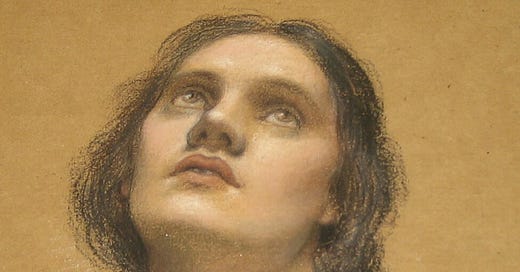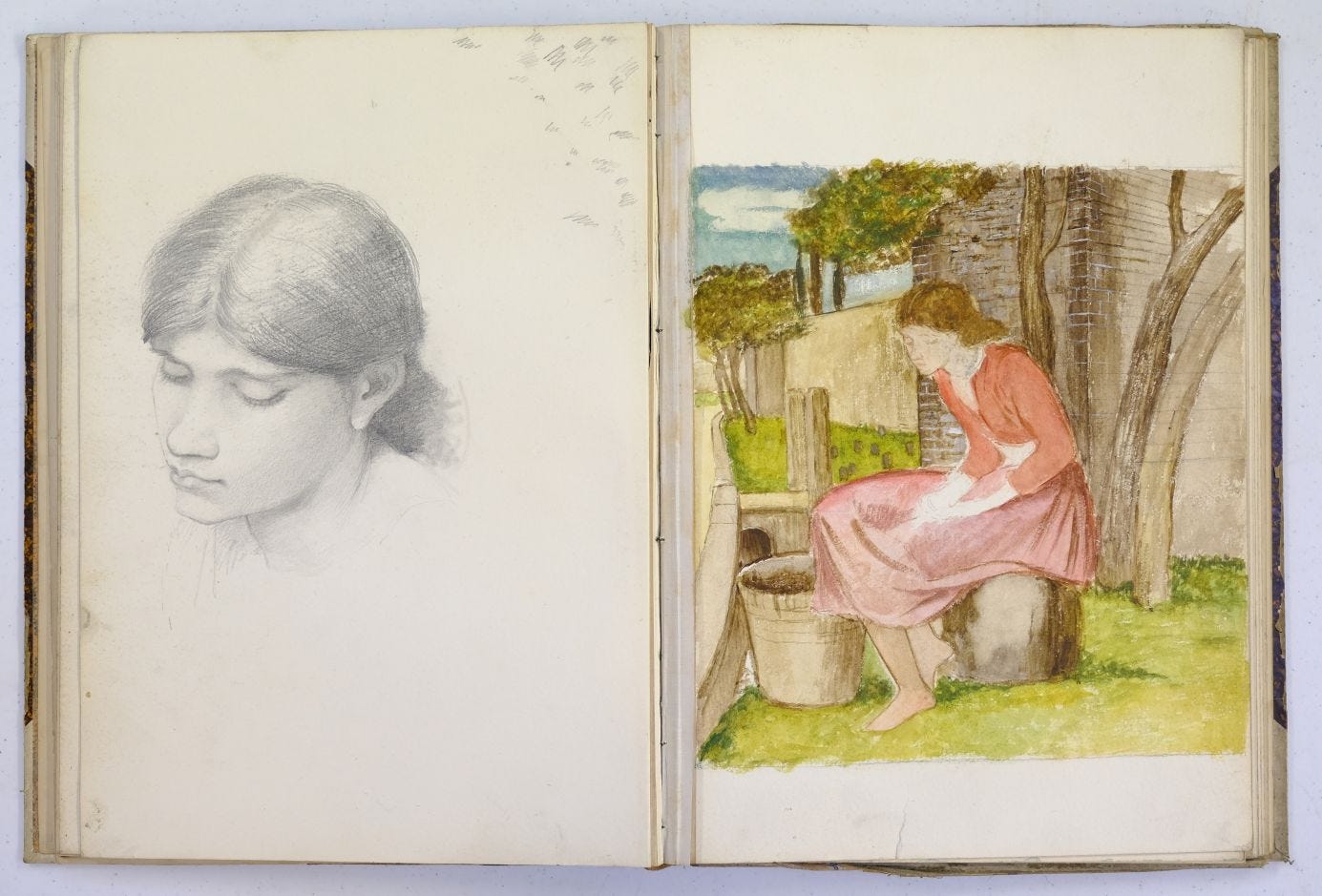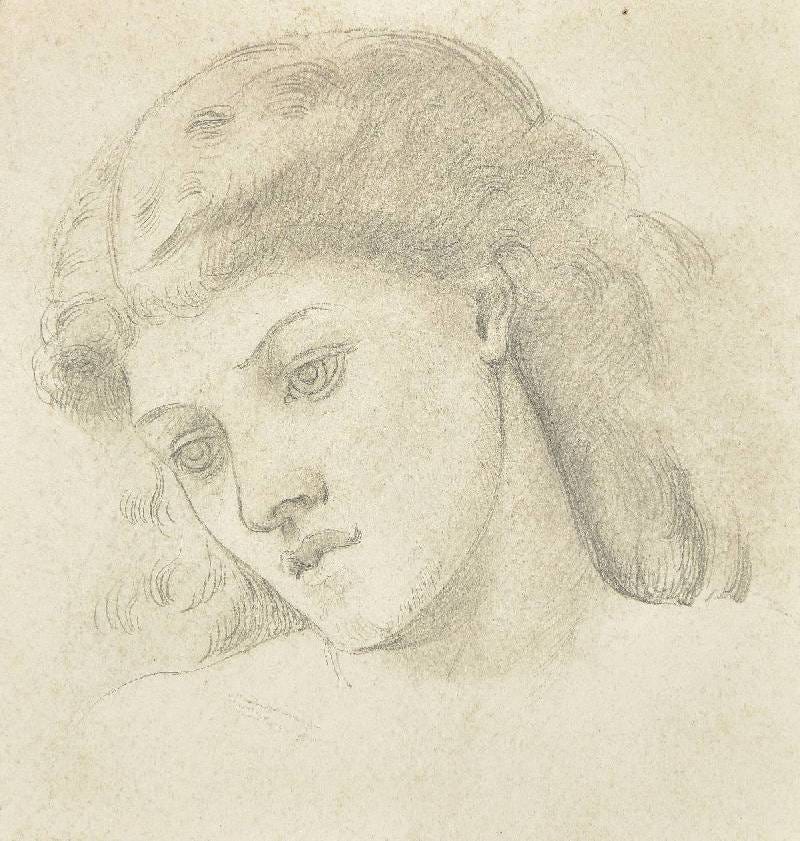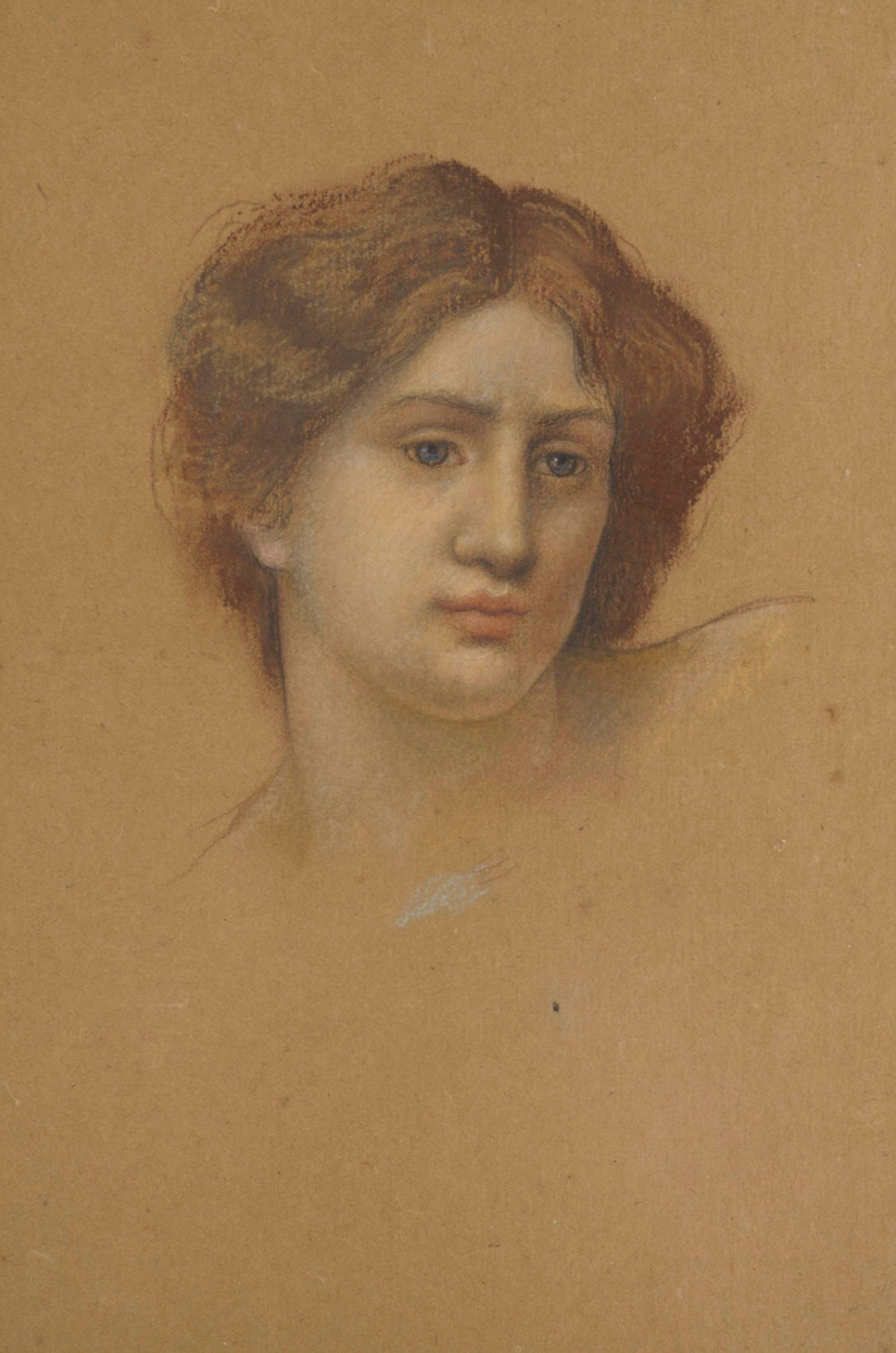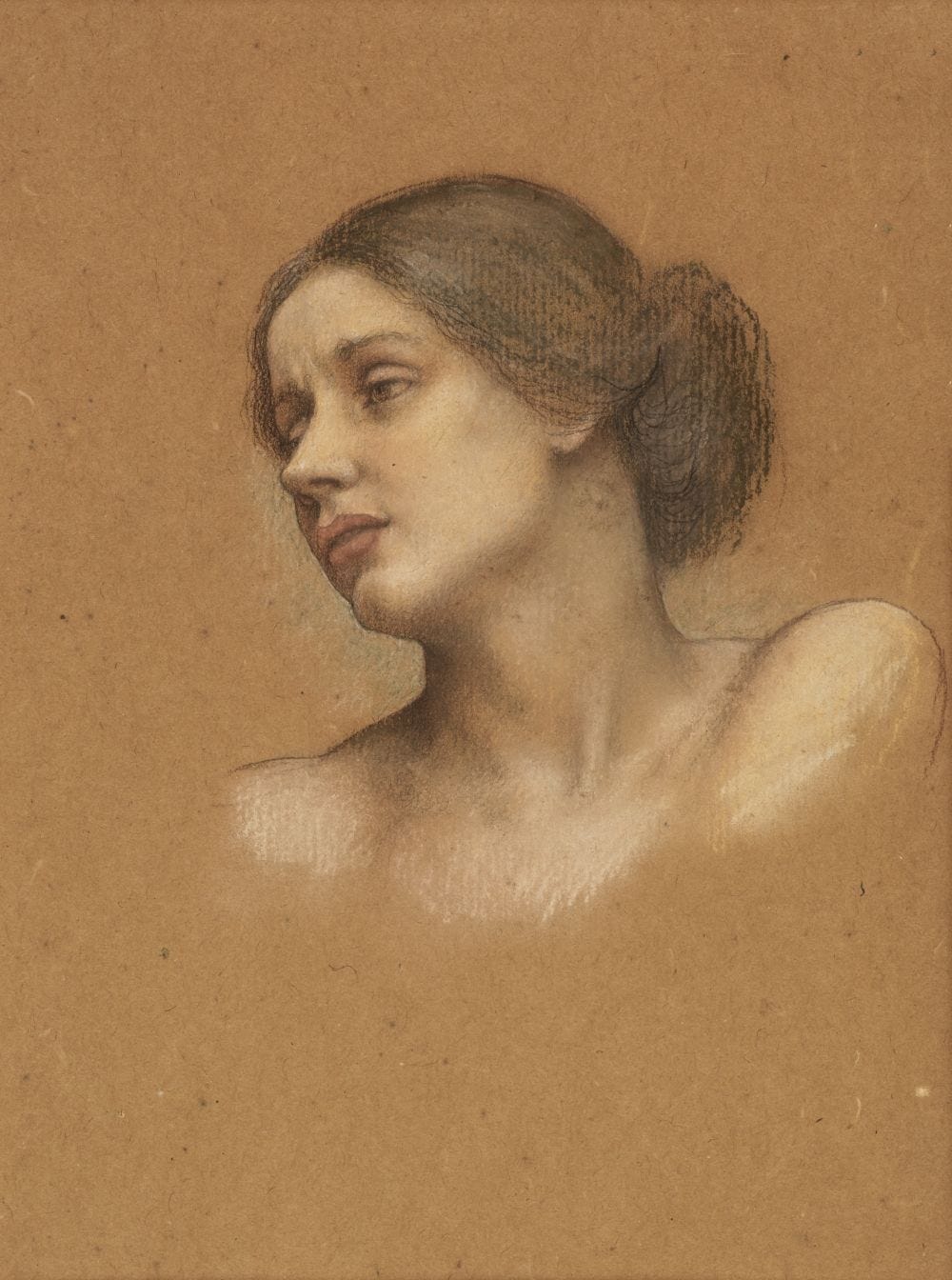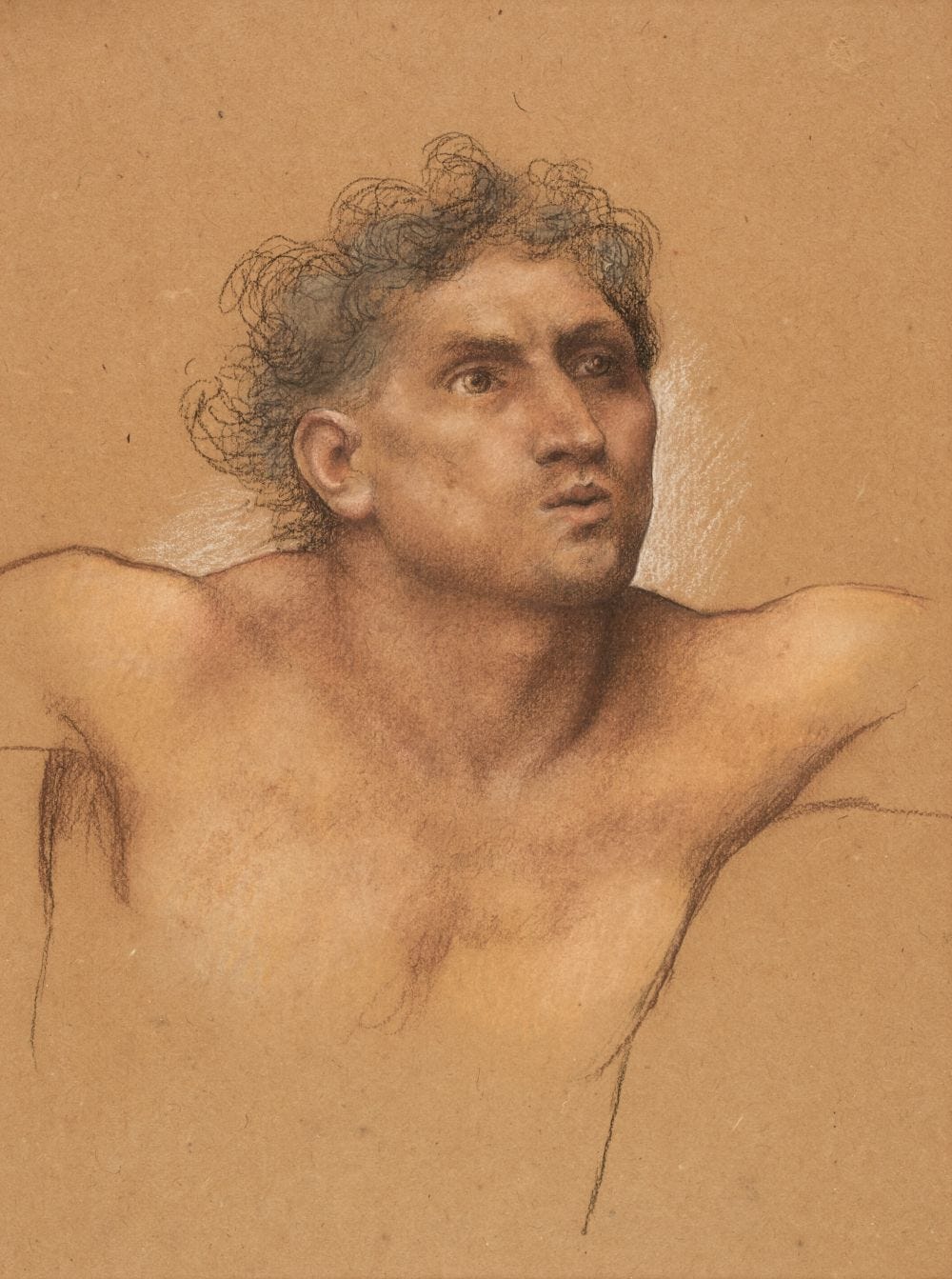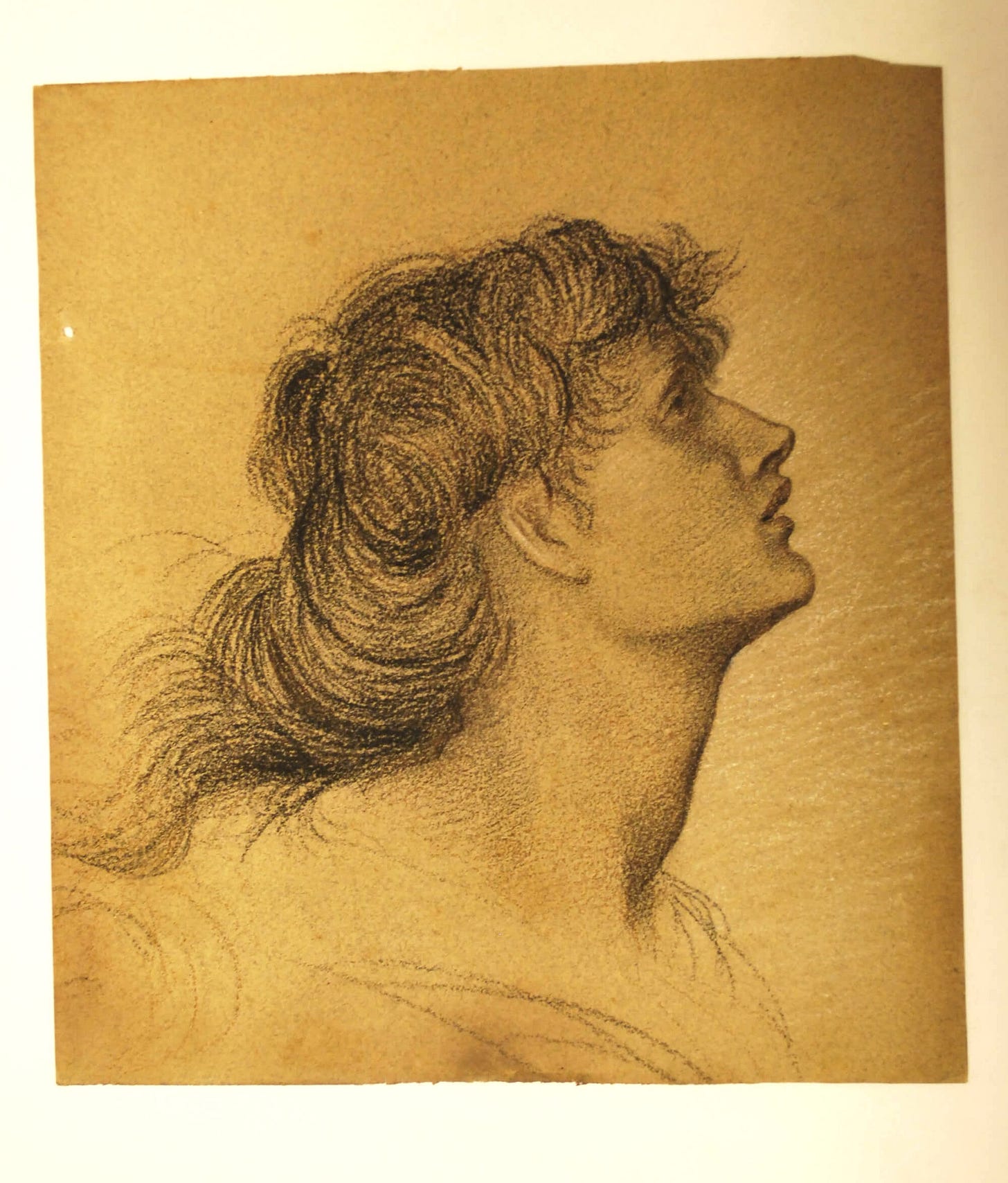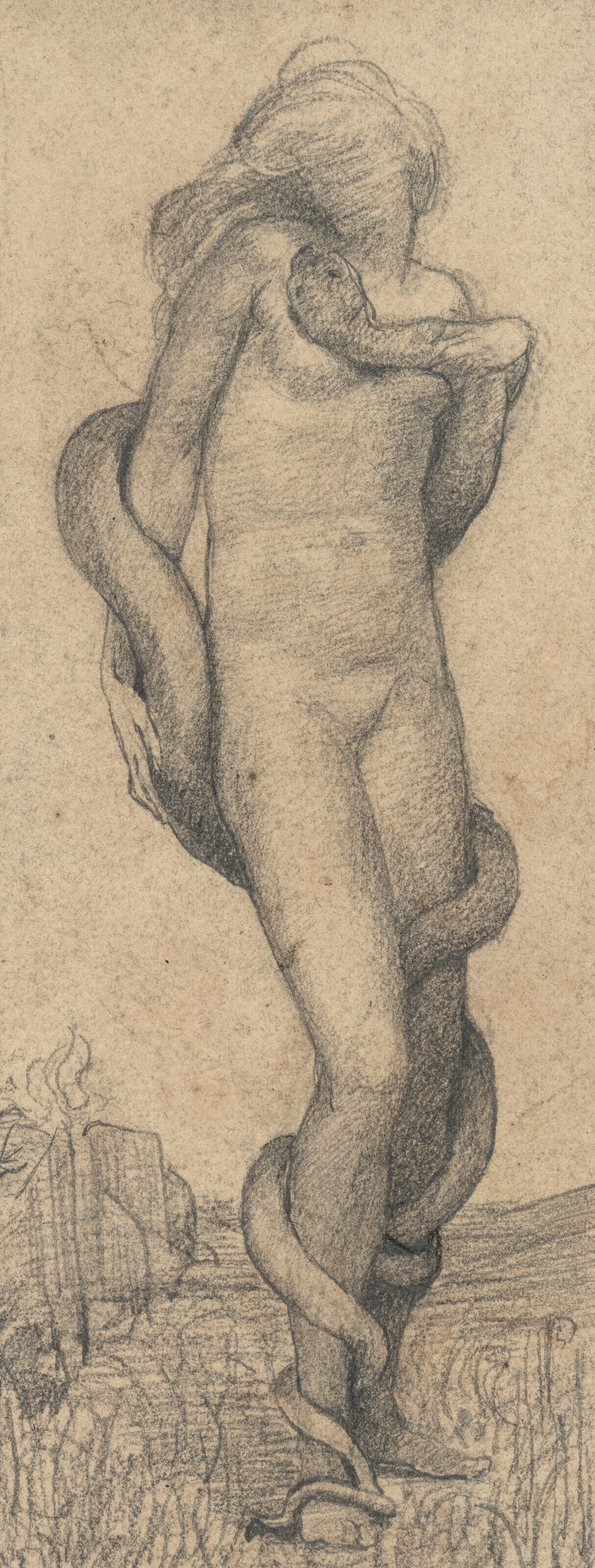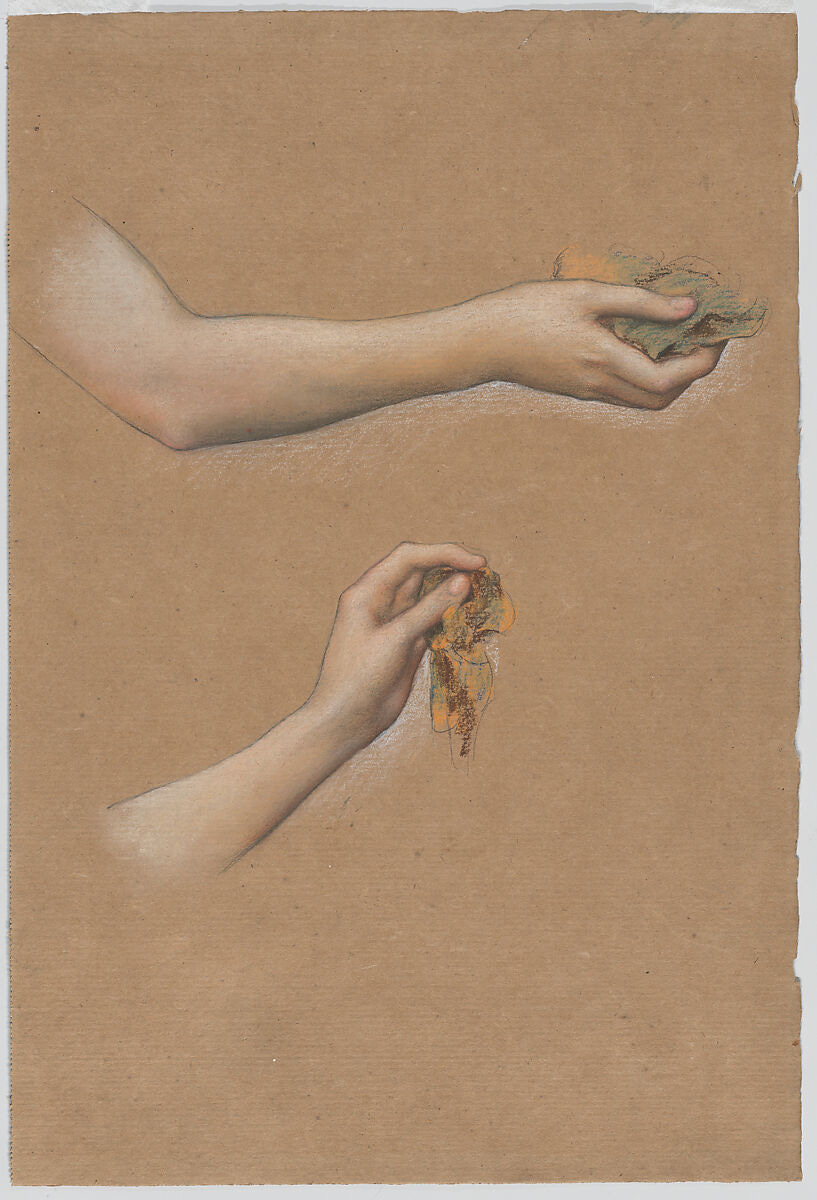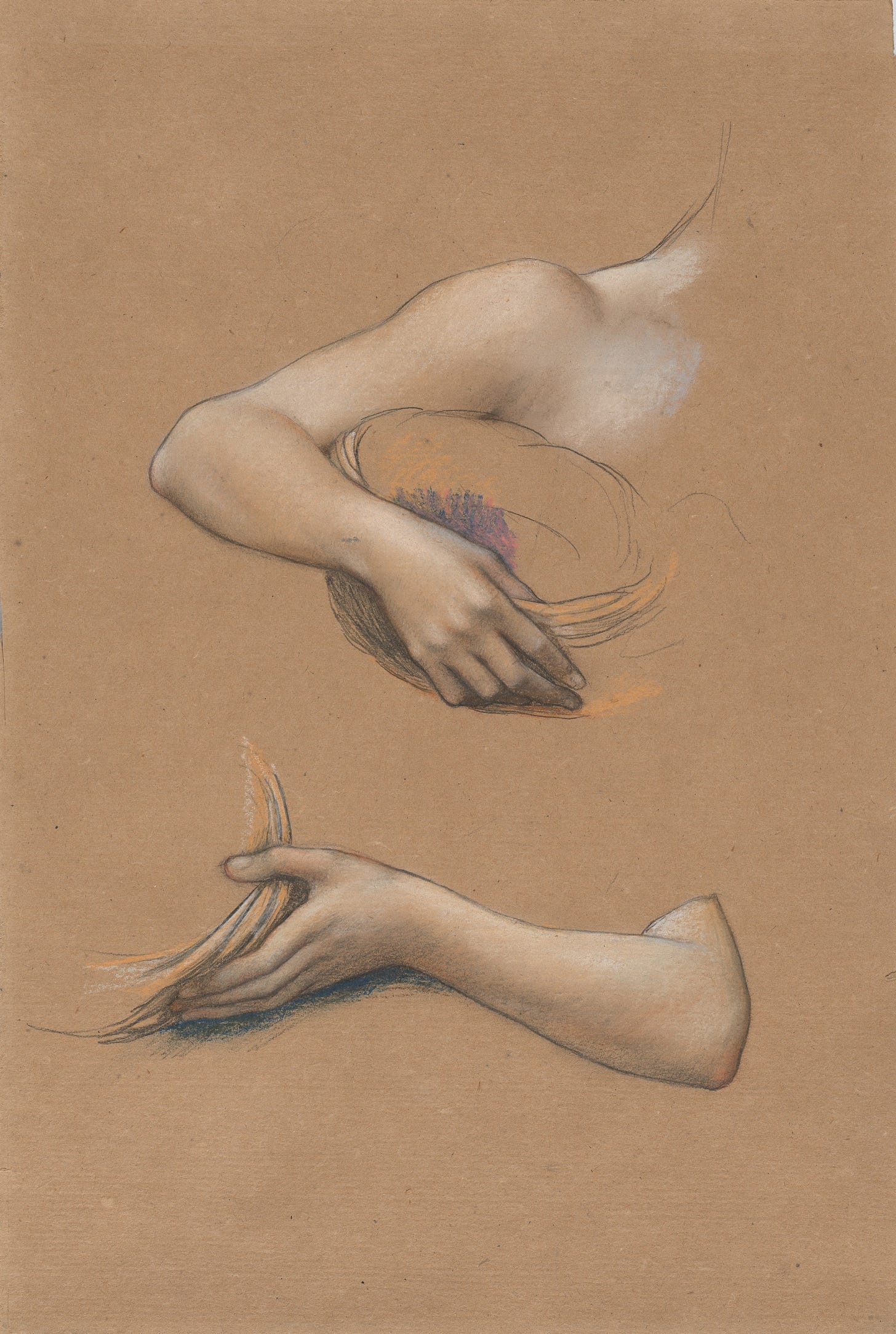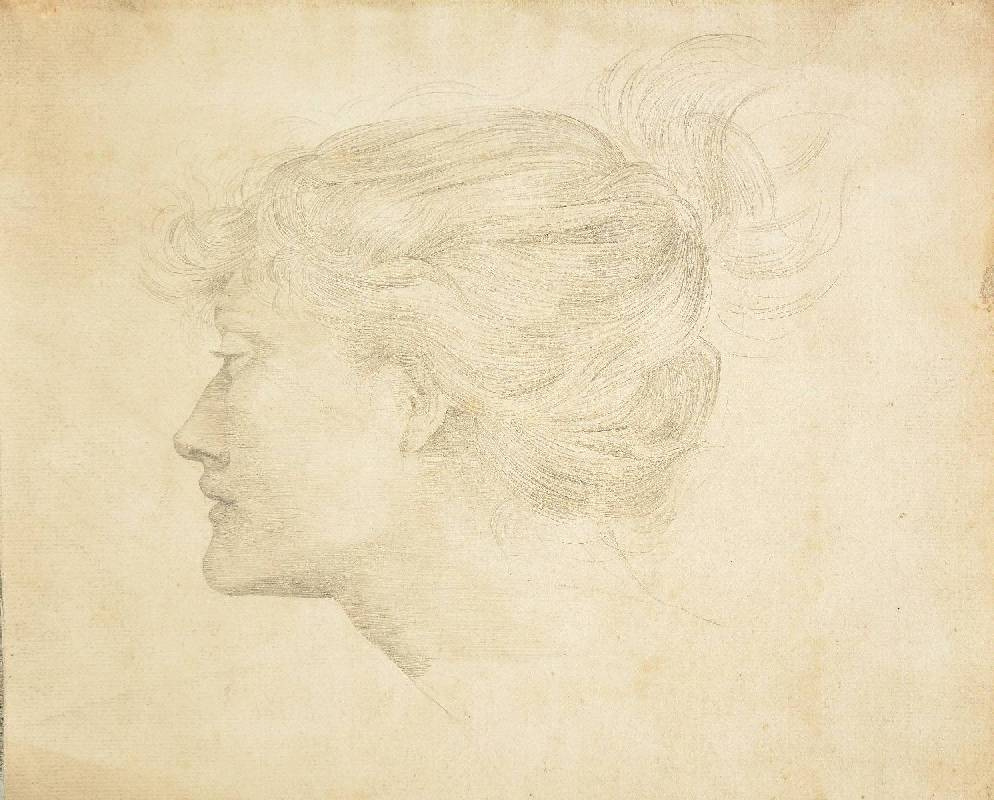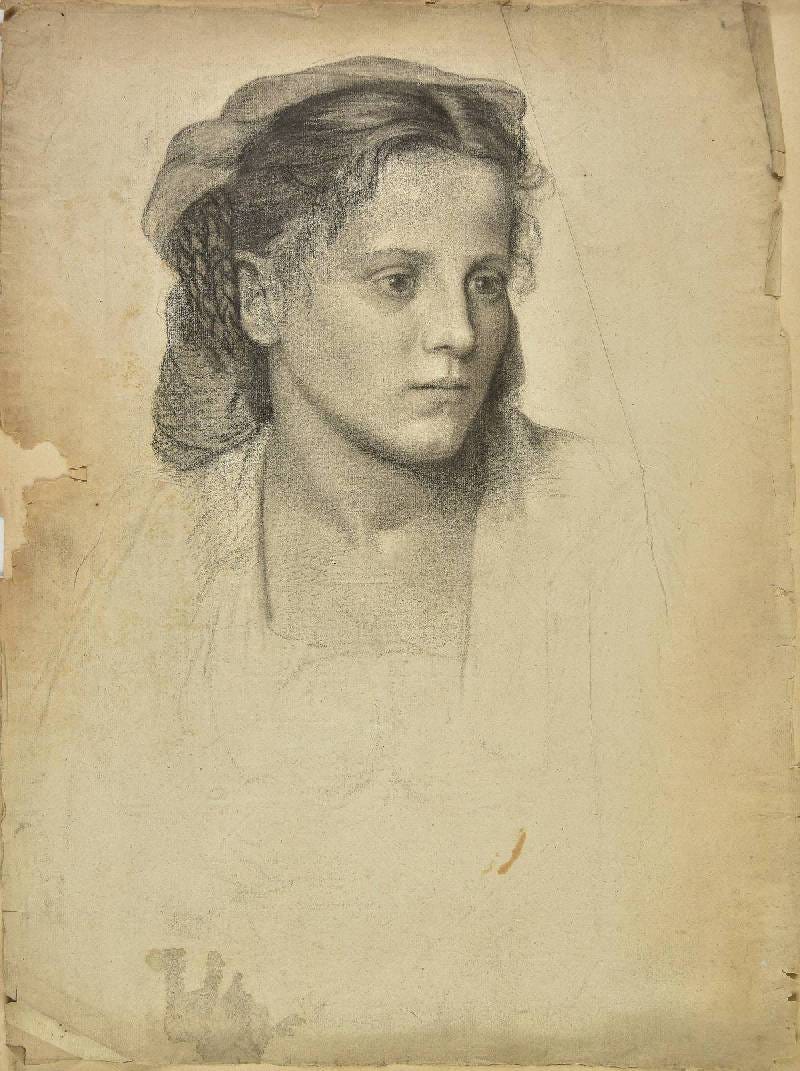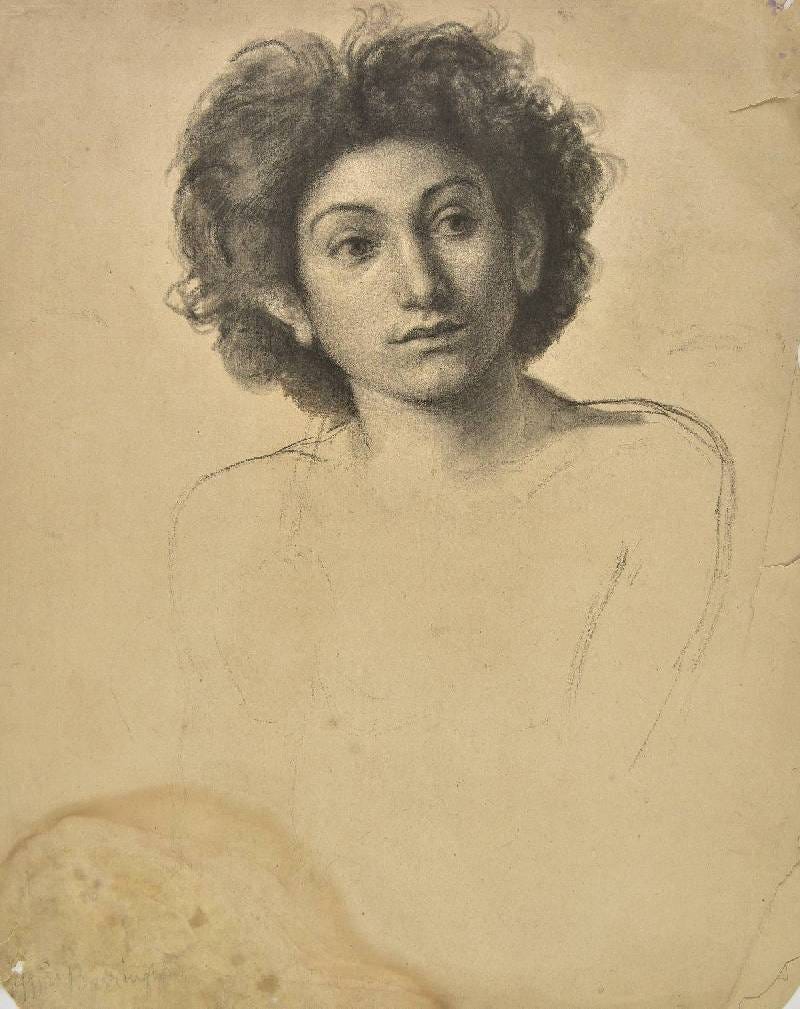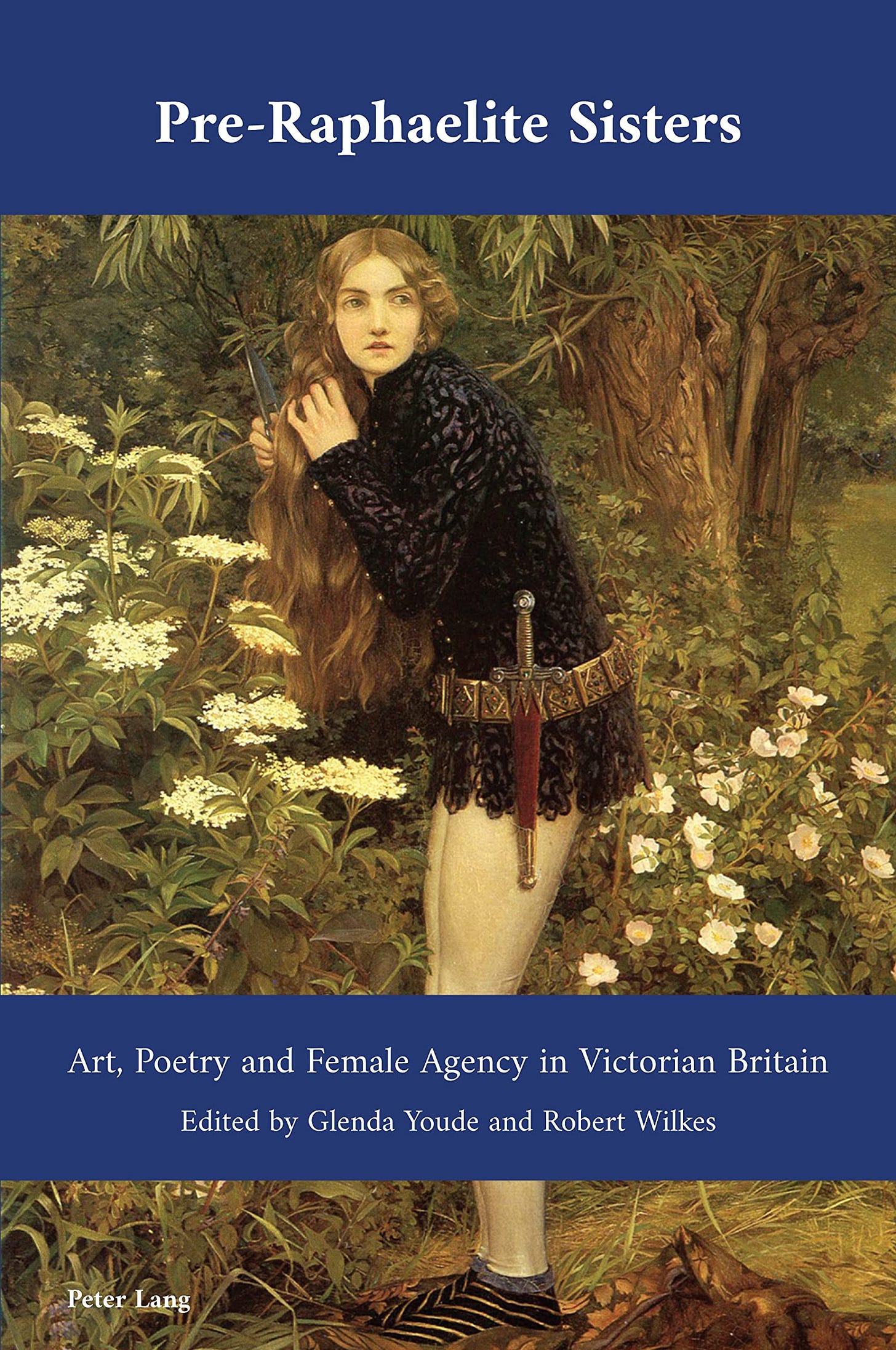The Art Studies of Evelyn De Morgan
Exploring de Morgan's art studies, artistic influence, and challenges she faced as a woman in the Victorian art world
“At work a little after 7… 17 today, that is to say seventeen years wasted in eating, dawdling and frittering time away… Art is eternal, but life is short… I will make up for it now, I have not a moment to lose.”
Evelyn De Morgan’s diary, 30th August 1872, De Morgan Foundation Archive
Evelyn De Morgan (née Pickering) was born into a middle-class Victorian family, but received a classical education that was notably rare for women of her era. Educated at home alongside her brothers, she was taught multiple languages and studied subjects such as classical literature, mythology, and the sciences, all of which would later infuse her art with layered symbolism.
Evelyn’s mother’s side of the family likely gave Evelyn her first exposure to the art wold, especially her uncle, the talented John Roddam Spencer Stanhope, a prominent figure in the second wave of the Pre-Raphaelite movement and one of my favorite artists (example below, In Memoriam). However, her mother insisted that she was to be "a daughter, not an artist," even going so far as to pay Evelyn’s drawing tutor to undermine her aspirations.
Fortunately, Evelyn’s father saw her potential and arranged private lessons from her uncle, whose help led her to enroll at the South Kensington National Art Training School in 1872. Later she attended the Slade School of Art where she studied alongside her fellow male students, revolutionary at the time. There, she trained under Sir Edward Poynter, a leading figure in the Aesthetic movement (De Morgan Foundation; Christie’s).
As an example of the influence on her uncle’s work, below are a few pages from Evelyn De Morgan’s sketchbook, which I instantly recognized as studies for her uncle John Roddam Spencer Stanhope’s In Memoriam depicting a young girl grieving for a skylark she discovered in the fallen autumn leaves. She later painted her own version of In Memoriam. 𓅨

Inevitably, throughout her career, she encountered many obstacles as a woman in the male dominated art world. In Dr. Charlotte de Mille’s presentation for the De Morgan Foundation, she discusses the experiences of women pursuing art studies at the Slade during the Victorian era:
This review on her painting St. Catherine of Alexandria in the The Guardian (1876), says it all:
“…by an artist named Evelyn Pickering, who it is surprising for more reasons than one to find out is a lady… will not fail to assert its merits as an exceedingly well-posed, richly-coloured, and above all expressive figure.”
After her formal education, Evelyn dedicated herself to her work with unwavering commitment, producing numerous preparatory studies for her paintings along the way. Using pencil and pastel on mostly grey or brown wove paper, she began with loose compositional sketches that gradually evolved into highly detailed studies of movement and form. As the De Morgan Foundation and Watts Gallery highlight, Evelyn’s obsession with anatomical accuracy extended to meticulous studies of hands, feet, and other small details, which were integral to the movement and grace of her larger compositions, as you will see in this part one of the series. These preparatory sketches were not mere exercises but works of art in their own right and would typically sell like her finished paintings (De Morgan Foundation; Watts Gallery).

Many of Evelyn’s studies can be traced directly to her finished masterpieces that were rarely reworked with overpainting nor deviated from her original compositions, In a future post, I will go deeper into how these studies contributed to her most celebrated works, highlighting her signature use of pose and composition. I would love to know if you recognized any of these studies for her completed pieces!
As the De Morgan Foundation highlights, Evelyn continued to draw daily for the rest of her life, a testament to her lifelong commitment to her passion. While she was profoundly influenced by late-Pre-Raphaelitism and artists such as Edward Burne-Jones and Frederic Leighton, as well as the Italian Renaissance painting taught to her by her uncle, John Roddam Spencer Stanhope (Christie’s; Watts Gallery), her style stands apart as truly unique. I had the privilege of viewing her original pieces at the A Marriage of Arts and Crafts: Evelyn and William De Morgan exhibition at the Crocker Art Museum in Sacramento last autumn. Seeing her work up close for the first time only deepened my belief that she is one of the most extraordinary artists of her time.
Please let me know which study resonated with you the most in the comments. For me it is Grief: A study for 'In Memorium'. 𓆸

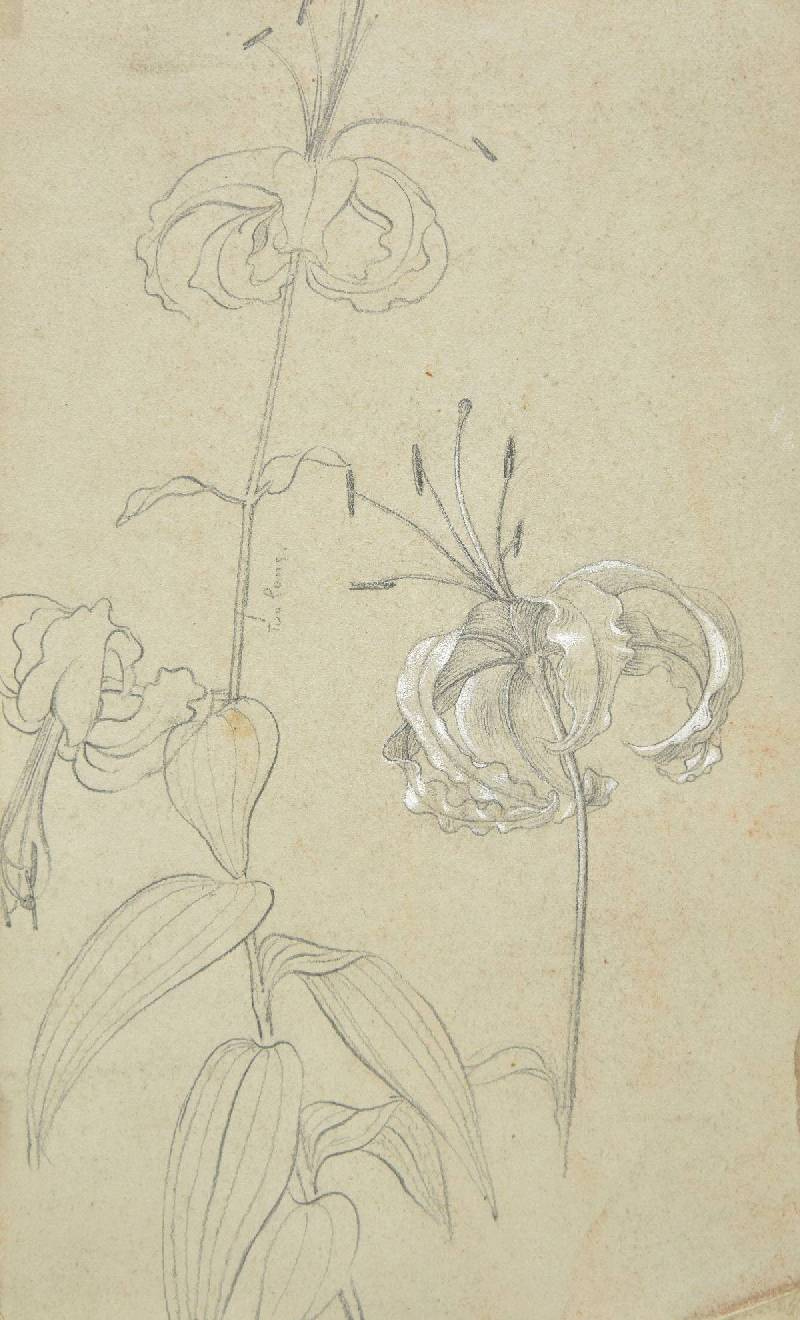


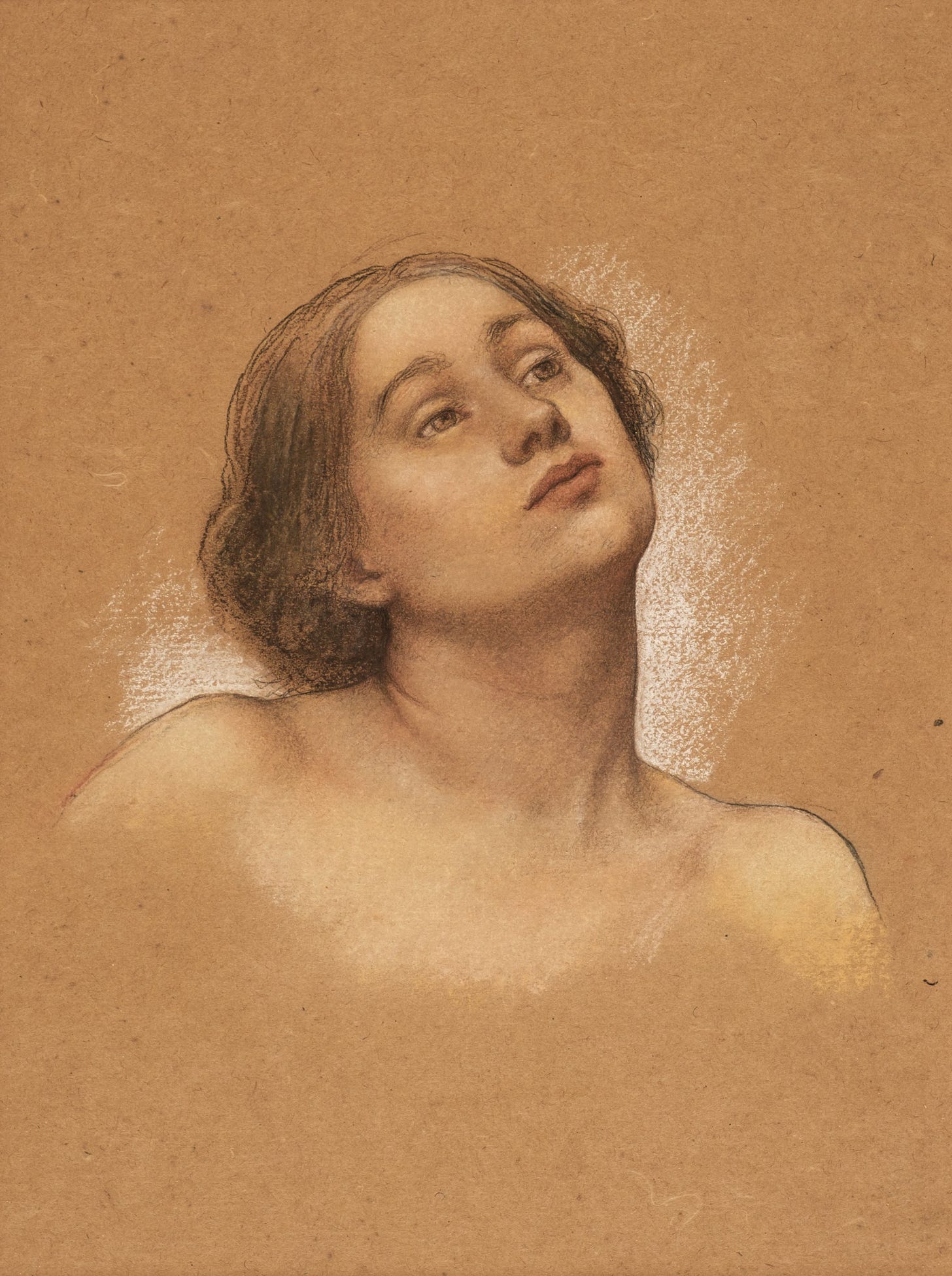
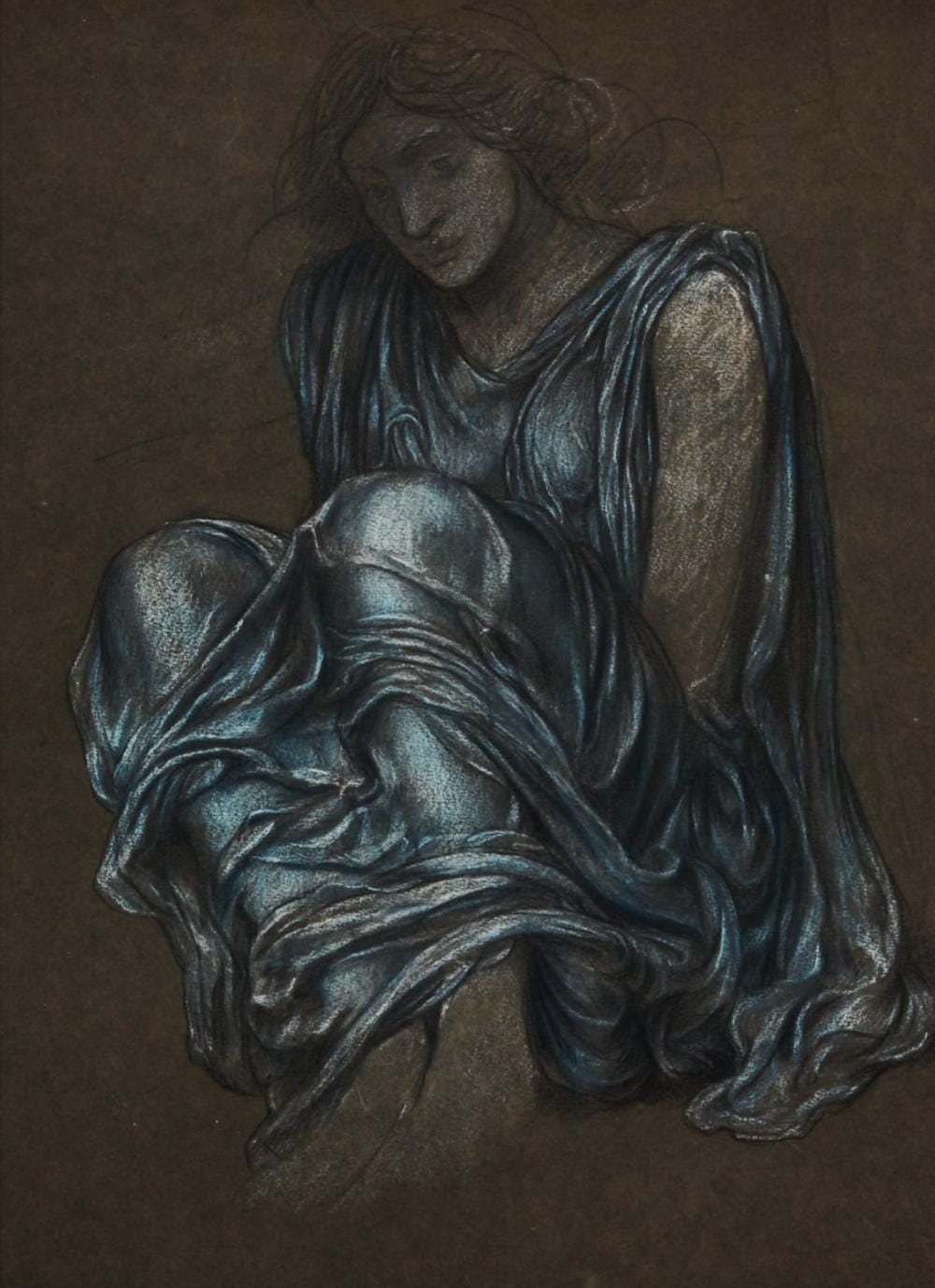
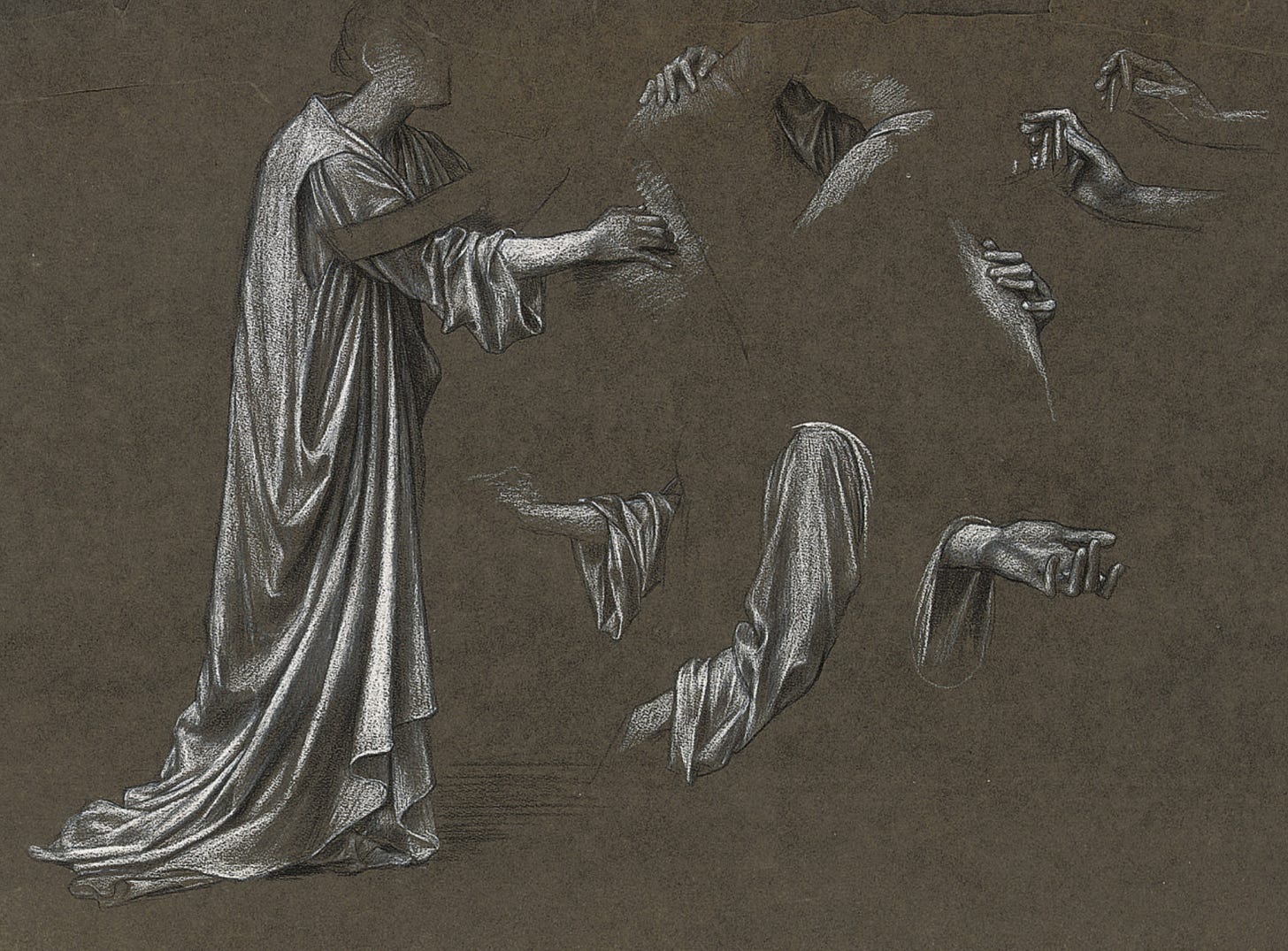
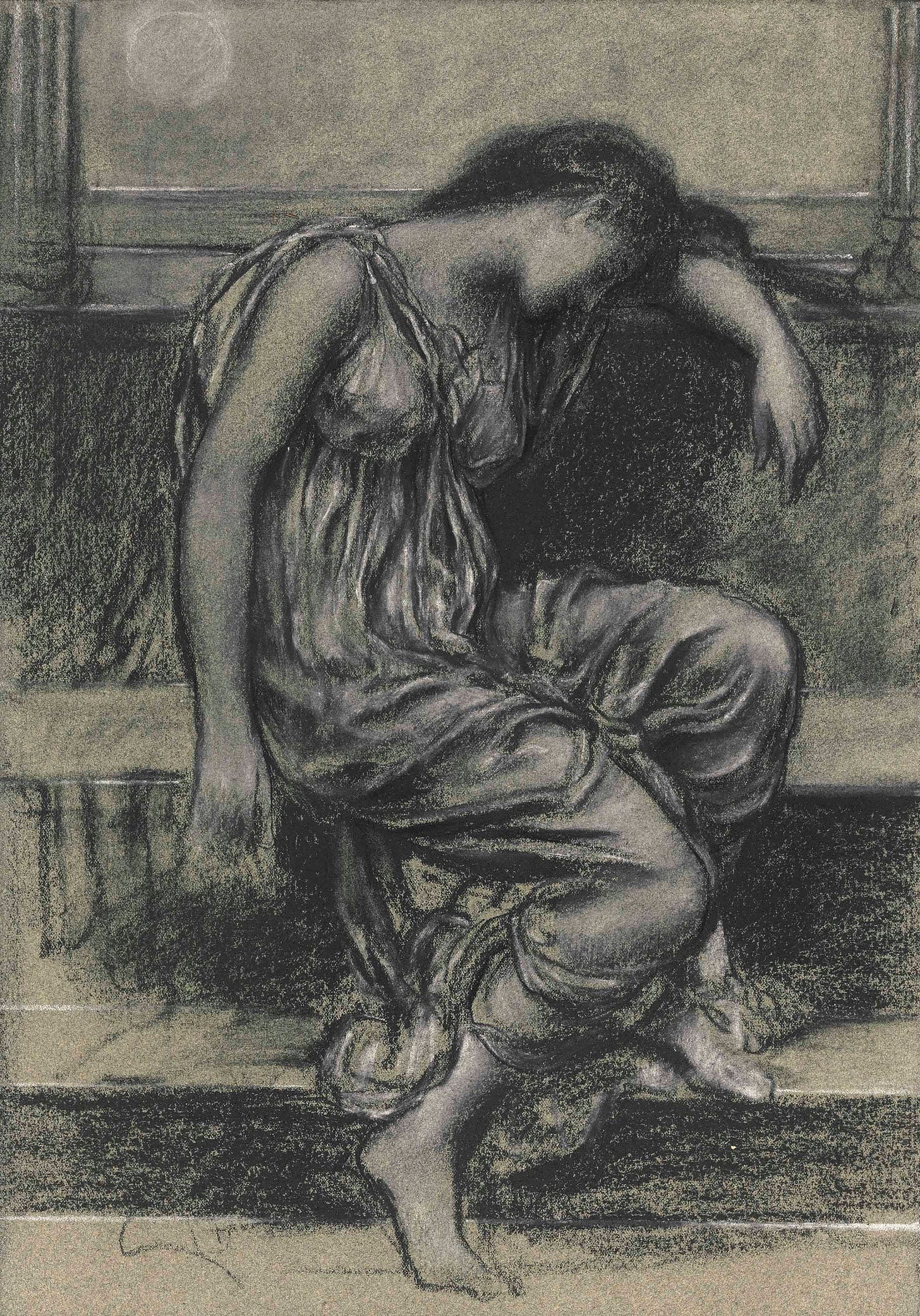
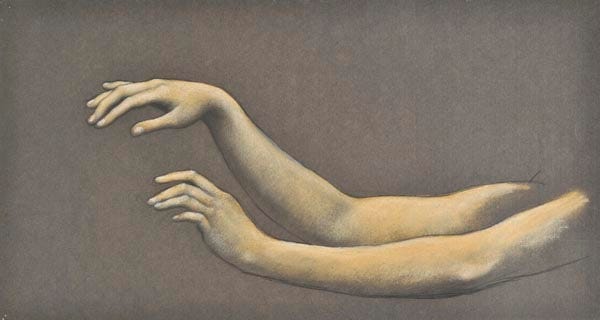
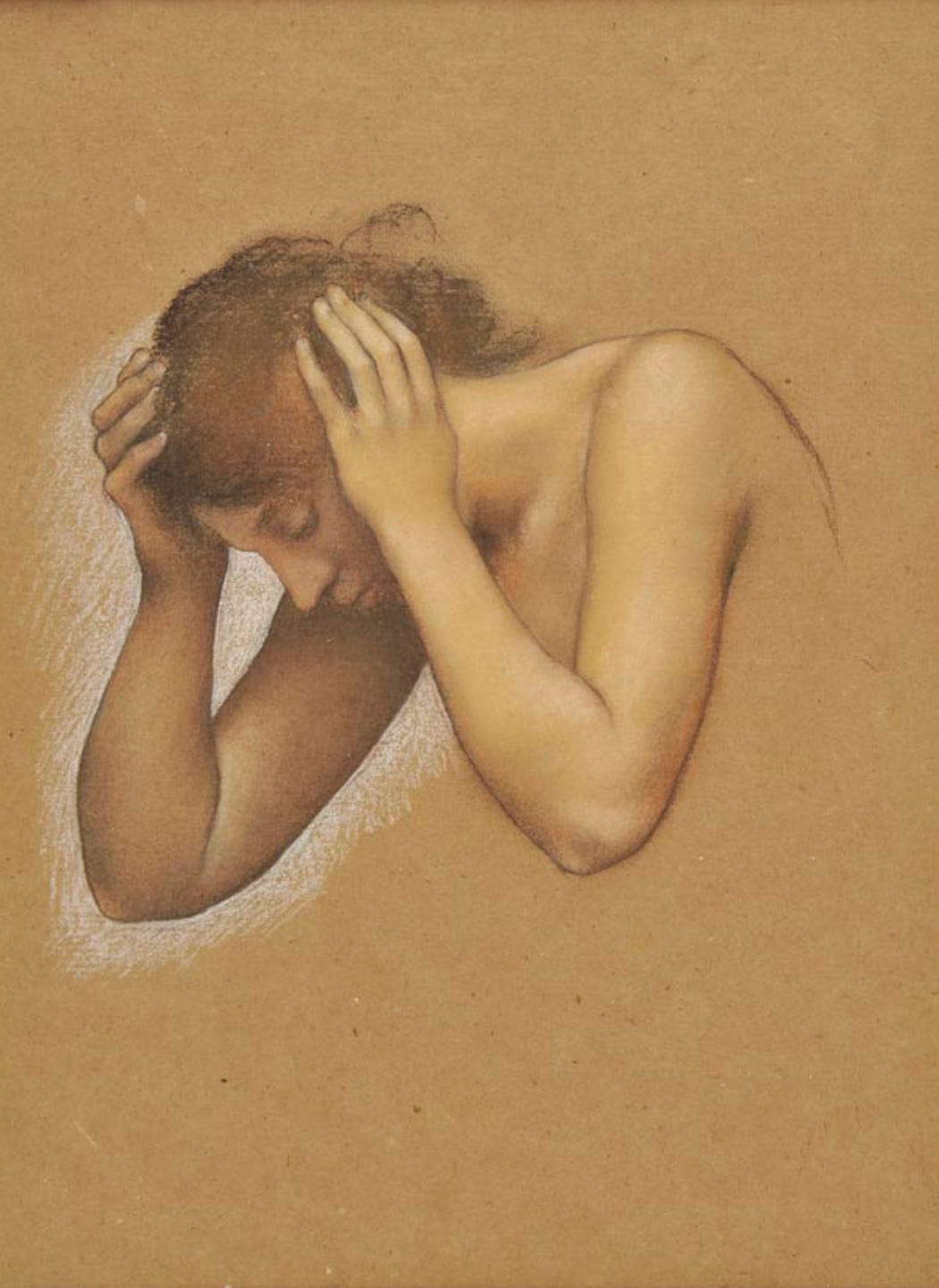
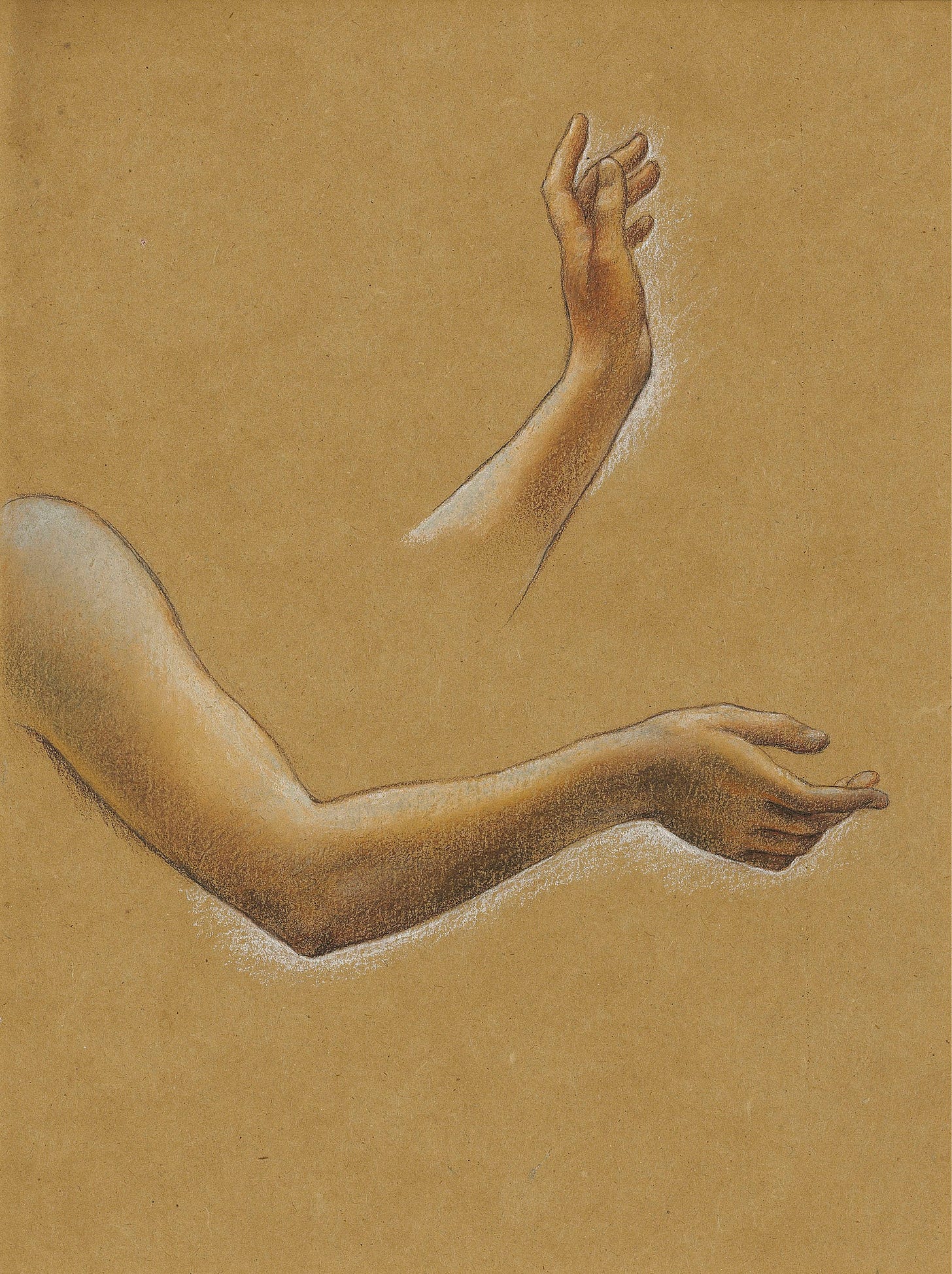
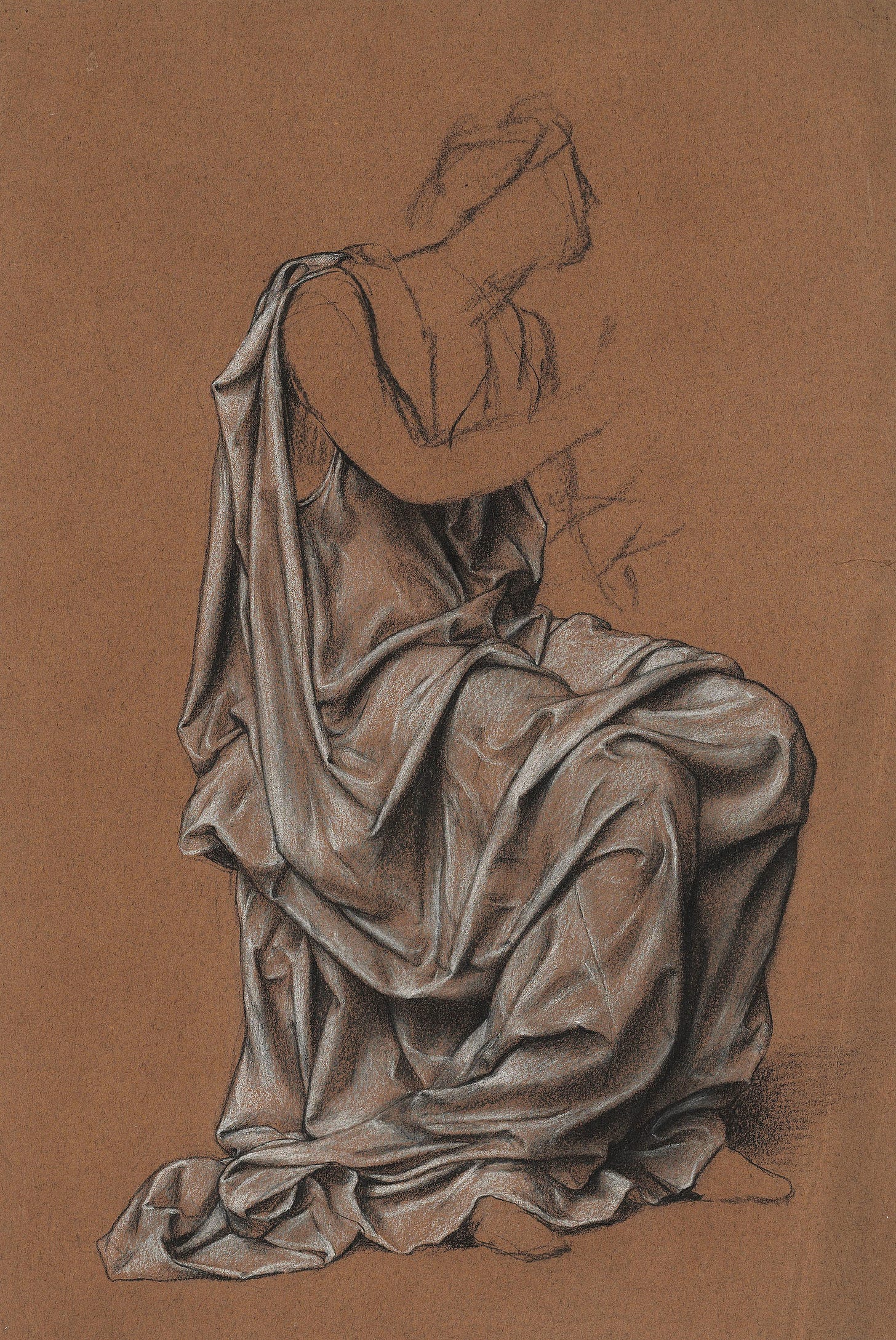

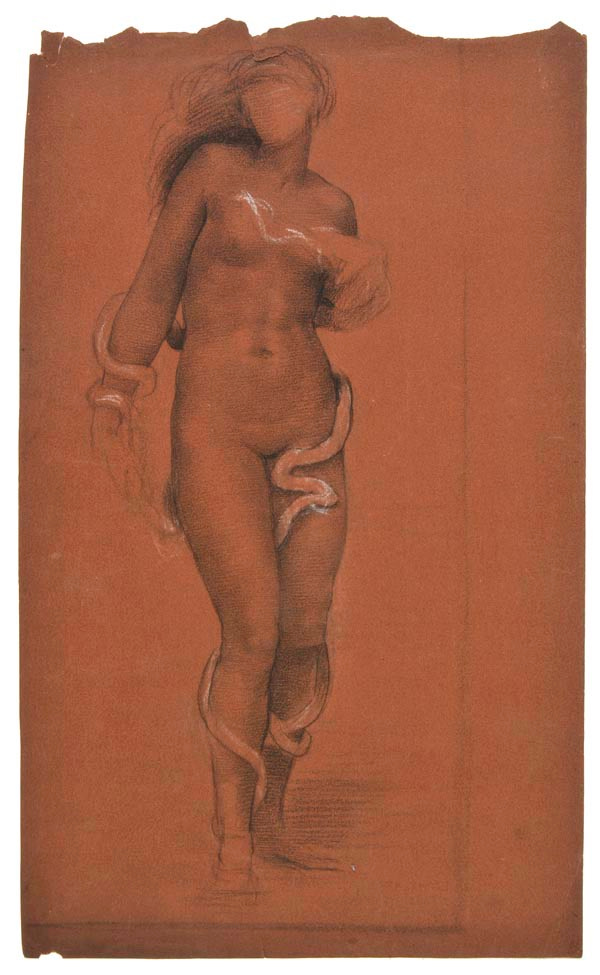
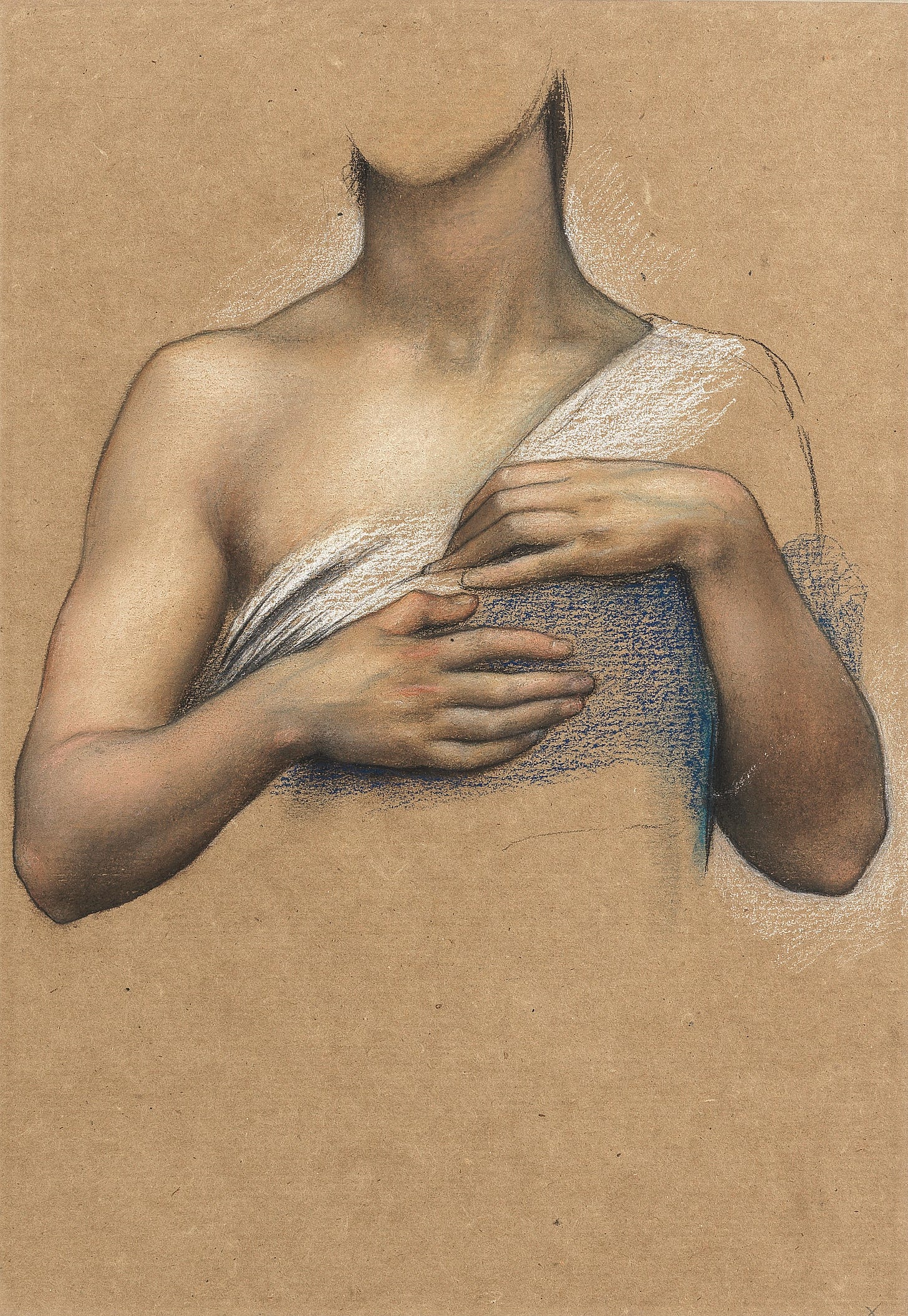
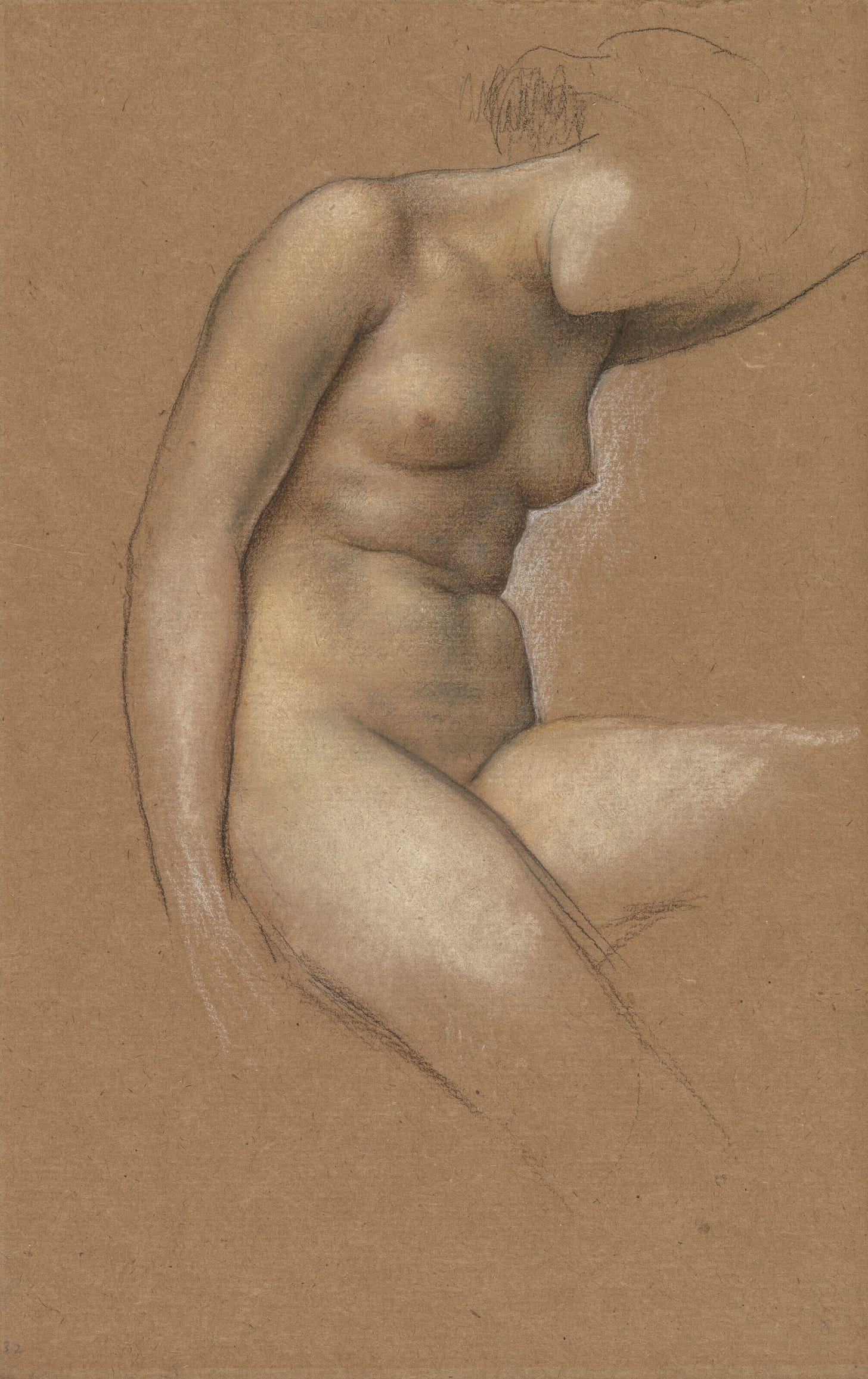

References
Evelyn De Morgan (1855 – 1919). De Morgan Foundation
Evelyn De Morgan. Watts Gallery Artist’s Village


